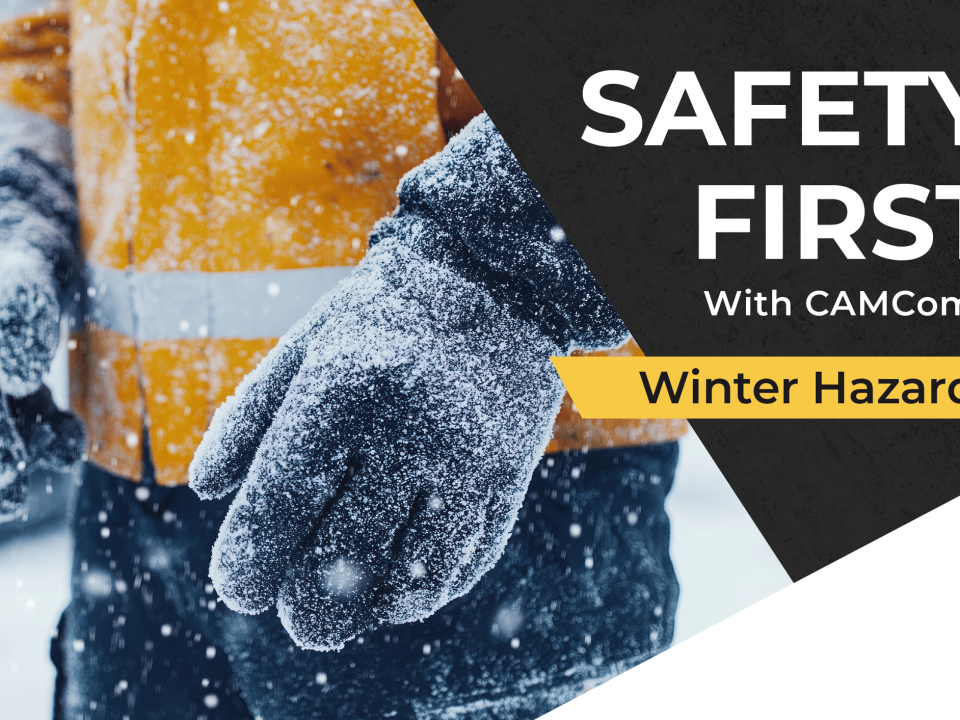
Building Safety: The Expertise of a Loss Control Consultant
July 25, 2024
CAMComp Advantage: Tailored Solutions for Michielutti Brothers
August 29, 2024Back injuries are the most common cause of occupational injuries resulting in time away from work, according to the U.S. Bureau of Labor Statistics. In the construction industry, the frequent movement and lifting of heavy items put workers at high risk for strains, spasms or sprains to back muscles and ligaments. Even a single incorrect movement can lead to significant injury, causing not only severe pain and disability but also substantial downtime and financial loss for both workers and construction companies.
At CAMComp, we are committed to promoting safety and health in the workplace. To help protect your back on the job, we’ve compiled essential lifting do’s and don’ts.
Do’s of Proper Lifting
Plan Your Lift
- Before lifting any load, plan your path. Ensure it is clear of obstacles and that the load’s destination is prepped and accessible.
- Choose the flattest, straightest, and clearest route, even if it takes a little longer.
- If the surface is rough, wear gloves to protect your hands.
Test the Weight
- Before fully lifting an object, test its weight by pushing it lightly with your hands or feet to gauge whether you can manage it alone.
- If additional help is needed, ask a coworker for assistance or use lifting equipment, especially for objects 50 lbs or more. Designate one person to direct the lift when two people are involved.
- Ensure the weight of the load is stable and evenly distributed, if possible.
- Break larger loads into smaller units to limit the strain when lifting.
Use Ergonomic Lifting Techniques
- Stand close to the object with your feet shoulder-width apart and center the load between your legs or shoulders.
- Bend at the knees and hips, not the back.
- Keep your chest forward, bend your knees, and keep the object close to your body.
- Lift using your leg muscles, straightening your legs in a smooth, steady motion without jerking.
Lower Loads Safely
- When unloading, face the designated spot and gently lower the load by bending your knees, not your back.
- Keep your fingers away from the bottom of the load to avoid injury.
Don’ts of Proper Lifting
Avoid Bending or Twisting Your Back
- Never twist your torso while lifting or carrying a load. Turn your entire body in the direction you want to move.
- Avoid repetitive, strenuous movements or holding a position for too long.
Don’t Rush
- Hurrying can compromise your lifting technique and increase the risk of injury. Take your time to lift safely.
- Avoid attempting to increase efficiency by lifting more than your body can handle.
Don’t Ignore Pain
- If you experience back pain, stop the task and seek medical advice. Continuing to work can lead to more severe injury.
Don’t Lift if You are Injured
- If you have had previous joint injuries, are underweight or overweight, or suffer from medical conditions like heart disease or high blood pressure, avoid heavy lifting.
Don’t Lift with Poor Posture
- Never lift with a rounded back and straight legs.
- Always lift from a balanced stance. Avoid lifting while kneeling on one knee or reaching over an object to pick something up.
- Never reach over your shoulders to lift. Instead, use a step stool or platform to reach the load.
Don’t Block Your Vision
- Never carry a load that blocks your view.
- Never look down while lifting.
Avoid Improper Storage
- Don’t store materials in locations that block passageways and exits.
- Don’t overstack items beyond the prescribed height limit or keep heavier items in hard-to-reach areas.
Back safety is crucial in the construction industry. By following these do’s and don’ts of lifting, you can help maintain a safer workplace and reduce the risk of back injuries.
At CAMComp, we have your back! Check out our safety resources for more tips on creating a safe and healthy workplace. Contact us to see how we can support your success and worksite safety.




